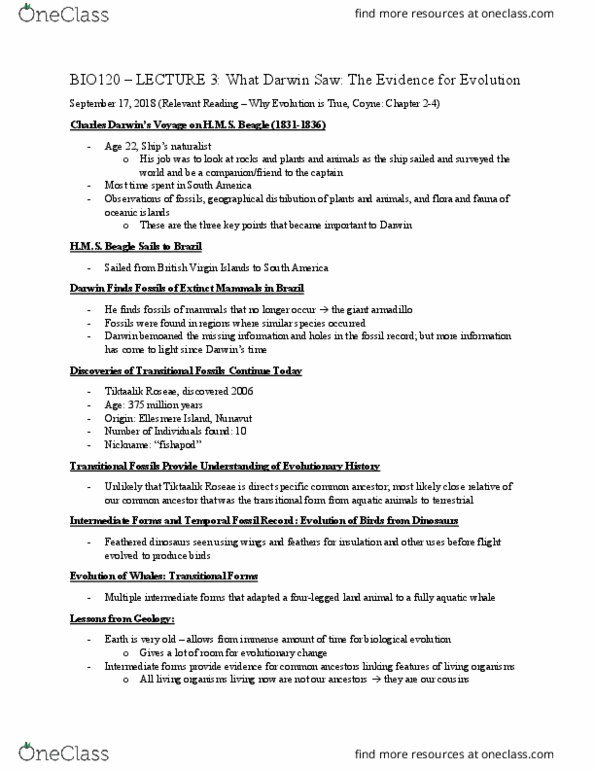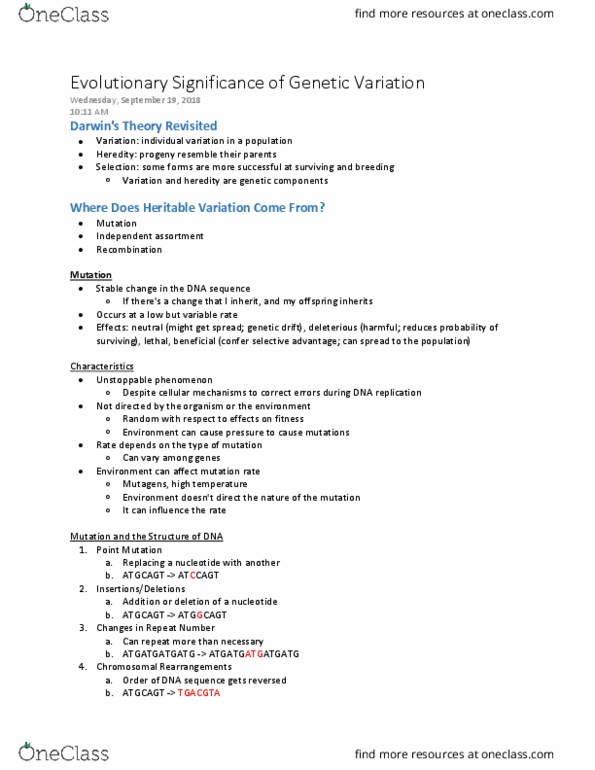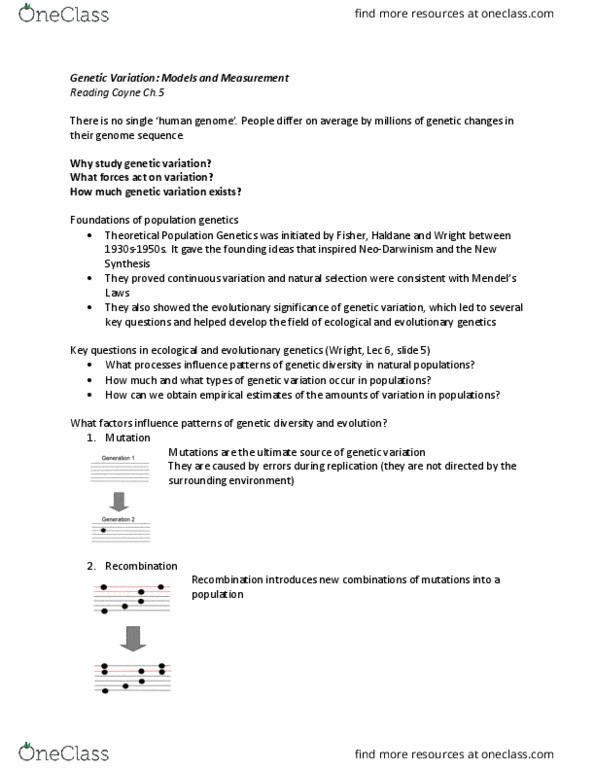BIO120H1 Lecture Notes - Lecture 4: Phenotype, Mutation Rate, Meiosis
BIO120H1 verified notes
4/25View all
Document Summary
Darwin"s theory revisited: variation: individual variation in a population, heredity: progeny resemble their parents. Selection: some forms are more successful at surviving and breeding: variation and heredity are genetic components. Where does heritable variation come from: mutation, recombination. Mutation and the structure of dna: point mutation, replacing a nucleotide with another, atgcagt -> atccagt. Insertions/deletions: addition or deletion of a nucleotide, atgcagt -> atggcagt, changes in repeat number, can repeat more than necessary, atgatgatgatg -> atgatgatgatgatg, chromosomal rearrangements, order of dna sequence gets reversed, atgcagt -> tgacgta. What is the rate of new mutation: read the entire dna sequence of a trio family, and search for errors, per base pair of dna: 1. 2 *10-8 per generation, per individual: approx. 72 new mutations (our genome is about 3 billion base pairs, and we have two copies) In the entire human population: every base pair in the genome is being mutated on average about.




